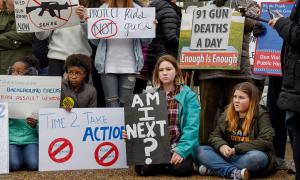article
Arts: The Secret to Making Schools Great?
Last week, I had a chance to preview documentary films that showed how a strong arts program—and that could range from mariachi to Shakespeare to poetry slams—could turn struggling schools into powerhouses of energy and promise. Last night, millions of viewers got a chance to see what students from a school that values the arts look like—on the Academy Awards, no less.



